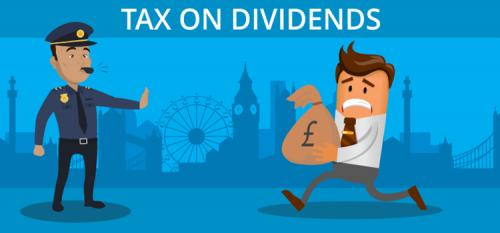UK Dividend Taxation- Changes, Tax Rates & Allowances

Overview:
What is dividend?-A company after deducting all the business
expenses and liabilities from its profits distribute a portion of its profit as
payment to the shareholders. Dividend can be distributed to shareholders in
form of shares of stocks, cash payments, or other property. Dividend Tax?-If
you own shares in a company you might liable to pay tax on dividend income. A
limited company is only allowed to pay dividend if it has sufficient profits or
retained earnings, if a Company in loss distributing dividends is considered an
illegal action. An individual can earn money from dividend in two ways either
by earning profit from selling shares of a company when their value is raised
or by receiving dividend regularly from company if they are distributing them.
If a company is distributing dividends then in it is imperative for company to
issue dividend voucher to each shareholder receiving dividend which include
details such as company’s name address, shareholder’s name and address, date of
issue, amount of dividend payable, number and type of shares owned by that
particular shareholder.
An individual need to pay tax on dividend income above
£5,000- dividend tax-free allowance which has been reduced to £2,000 for the
tax year 2018/19 when 2017 spring budget was introduced. Tax on dividend income
depends on which tax band or marginal tax rate an individual falls. Add your
dividend income with other taxable income. Tax on dividend is paid after your
other taxable income is taxed.
- Basic-Rate Tax Payers((£0 – £33,500)- 7.5% effective dividend tax rate
- Higher-Rate Tax Payer (£33,501 – £150,000)-32.5% effective dividend tax rate
- Additional-Rate Tax Payer( £150,000 +)- 38.1% effective dividend tax rate
UK Dividend Taxation System- What’s Changed?
Changes to the dividend taxation rules come into the effect
on April 2016, People or investors who own shares in a company were hit by
increased tax rates and reduced dividend allowance, which means more people
were now liable to pay dividend tax. Earlier all the UK dividends were paid
with notional 10% tax credit but not anymore as old tax credit dividend system
was abolished and replaced by fixed rate taxation system.Dividend tax-free allowance had been reduced
to £2,000 from £5,000 which was in the tax year 2017/18. Basic tax payer no
more enjoys 0% dividend tax liability, 7.5% tax rate dividend liability was
applied for them after April 2016. Tax rate for higher tax payers increased to
32.5% from 25% and 38.1% for additional tax payers from 30.56%. Trustees were
not allowed to enjoy dividend tax-free allowance.
Post Your Ad Here





Comments